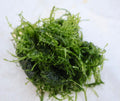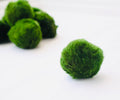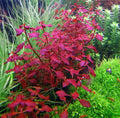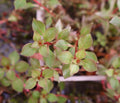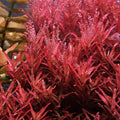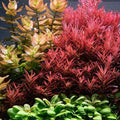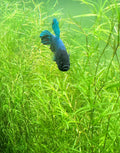5 Tips to Make Live Plants Help Fight Algae in Your Aquarium
When it comes to fighting algae, honestly, live aquarium plants are one of your best defenses. So think of it like having a healthy front lawn full of grass—you know, they've got forceful roots, they're growing well, you're constantly cutting them. There's very little room for weeds to come in there if everything is healthy.
Versus if you have a really patchy lawn that's really unhealthy, there's plenty of open spots where just bare dirt is there. Of course, there's going to be many opportunities for weeds to land on your lawn and take advantage of the situation.
We want to focus on growing really healthy plants that are going to outcompete the algae for the same resources. They both use lighting and nutrients, and when they're really, really healthy, algae doesn't have a chance against them.
But on the other hand, if the algae is winning and now they're starting to coat the leaves on the plants and they're preventing the plants from getting enough light and nutrients, then there's a good chance your plants may not do well and may actually melt away and die.
Why Healthy Plants Are Key
There are a few key things you can do with the plants themselves to make sure you get a leg up on the competition against algae.
Tip #1: Plant Densely
When you have a newly planted aquarium, if at all possible, plant as densely as possible so that they will consume all the excess nutrients in the water column.
You may have seen these really beautiful aquascapes, like the Iwagumi style, where it's primarily featuring the rock work in there, and then there's very few plants—like maybe a carpeting plant down below. But that’s about it.
Those types of aquariums that have a really low plant load tend to be pretty difficult to maintain and keep algae-free.
Versus, let's say, you have a Dutch-style or a jungle-style aquarium that’s chock full of plants—it's going to be a lot easier to keep algae away because, again, you have so many plants already consuming those resources naturally.
If you can't afford to get many plants for your aquarium at first, I completely understand it—been there before. What I like to do is look around the house to see if there are any household plants that I can put in my aquarium. Or maybe talk to your neighbor and see if they have any. Like pothos, for example, is a great one. All you need to do is cut off a little branch, stick it in the water, and it'll start growing roots and absorbing excess nutrients.
Tip #2: Choose Fast-Growing Plants
Choose fast-growing plants, especially ones that will suck up nutrients from the water column.
One of my favorite algae-busting plants is Water Sprite. Many people like to grow it in the ground. I like to grow it floating because—kind of twofold—not only is it up near the surface where it can absorb CO₂ directly from the air (which helps it grow faster and consume more nutrients), but those really broad leaves end up providing shade.
This is really good in an immature aquarium if you have low-light plants down below—it can help shade them and make sure they're not getting too much light.
Other cool floating plants I like include Amazon Frogbit and Dwarf Water Lettuce—those are all really good ones. Most floating plants are going to be pretty fast-growing.
Stem plants are also great. They primarily take nutrients from the water column versus the substrate. One of my favorites is Guppy Grass, Pearl Weed. These are especially good for breeding tanks because they help absorb nutrients and also provide hiding spots for fry.—took over half the tank, but no algae on those leaves.
Tip #3: Start with Beginner Plants
If you're new to planted aquariums, I strongly recommend starting with beginner plants.
I know—Java Ferns, Amazon Swords, Dwarf Aquarium Lilies—they're very common. You might be looking for something rare. But beginner plants are so good because they're robust and easy to care for. They're going to do well for you.
Versus, if you jump into a high-maintenance plant that looks wonderful in a pro aquascape, but you don’t have the experience to care for it—it’s probably not going to do well. And algae loves attacking unhealthy plants.
Tip #4: Consider Plant Placement
Do your research on plant placement. Some plants are slow-growing and don’t like a lot of light—like Anubias and mosses, which are known algae attractors. Others are fast-growing and can handle bright light.
So putting sensitive plants in corners or shaded areas (like under floating plants or tall stem plants) will help reduce algae issues.
Tip #5: Be Realistic—Expect Some Algae
Be realistic and expect to get algae at some point—especially in a newly set-up aquarium. It’s part of the cycle.
Your tank is still immature. The plants are often in shock from being moved or uprooted. They may not grow much initially, which means they’re not absorbing nutrients—and algae will take advantage of that.
Also, many plants are grown emersed (out of water) at farms. When submerged in your tank, those leaves melt away as the plant adjusts and grows new underwater leaves.
Tip:
Remove any melted or rotting leaves immediately. They’re algae magnets. For stem plants where bottom leaves fall off, trim and replant the tops—you get two plants for the price of one!
Floating plants can grow out of control too, so prune them regularly to avoid blocking light and starving the plants below.



